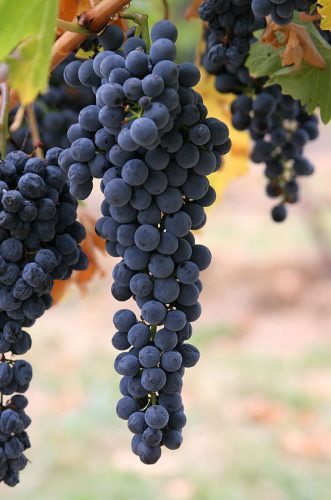Grape is a climbing plant belonging to the grapevine family.
You are viewing the mobile-adapted version of the page.
The one for tablets, laptop and desktop also provides general information, such as origin and cultivation.
Grape (Vitis vinifera) is a climbing plant belonging to the grapevine family (Vitaceae) .
If there is very strong easterly wind in winter, it is wise to protect a grape against the wind by wrapping it in bubble wrap. Do not wait too long to remove it or the grape will sprout too early.
Grapes are pruned twice a year. Because grapes, such as birch, maple, and beech, bleed from pruning wounds when the plant or tree is not dormant and the sap flow is active, heavy pruning cannot be done in winter until the sap flow stops. In practice, the best main pruning time is early winter (late November or December). Do not prune in frost: freezing weather hinders a smooth recovery from pruning wounds. An adult grape bush consists of a few large main branches. On these main branches the lateral branches have grown in the course of the summer. Prune these lateral branches back to two eyes (buds) from the main branch. The grape will sprout again in the spring on the pruned lateral branches. This is in contrast to summer pruning. This consists of removing the ends of the fruit-bearing tendrils so that nutrition is spent on the growth of the grape bunches and not the tendrils.
Bugs
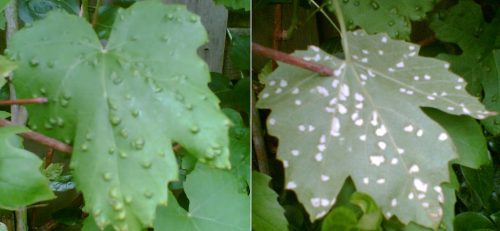
Dark-colored bumps on leaf, grey underneath: Grape erineum mite (Eriophyes vitis).
Ripe grapes are eaten: wasp.
White powdery substance: Long-tailed mealybug (Pseudococcus longispinus).
Soft spots develop in ripening grapes, then rotten spots: Spotted wing drosophila (SWD) (Drosophila suzukii).
Fungi & diseases
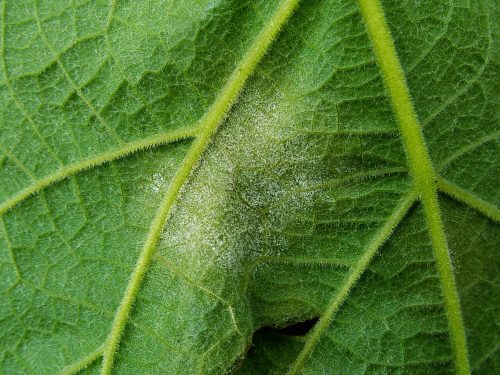
Both Downy mildew and Powdery mildew primarily affect the leaves. Downy mildew (Plasmopara viticola) – belonging to the Peronosporaceae family – can be recognized by the fungal layer on the underside of the leaf and the associated leaf spots on the top of the leaf. Powdery mil

Leaf with white fungus: powdery mildew.
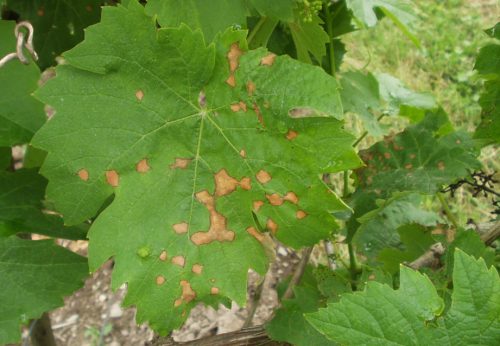
Black edges along dead (brown) parts of leaves, dried-in affected grapes: black rot (Guignardia bidwellii).
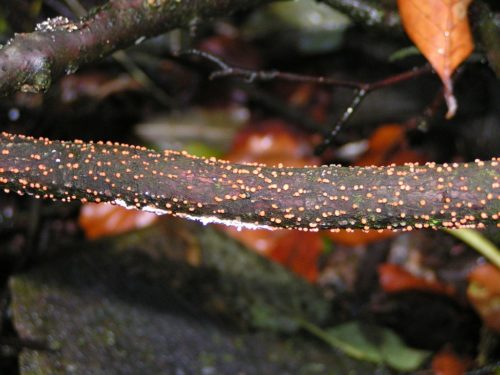
Small, orange-red raised spots appear on affected branches, which can be either dead or living branches: Coral spot (Nectria cinnabarina).
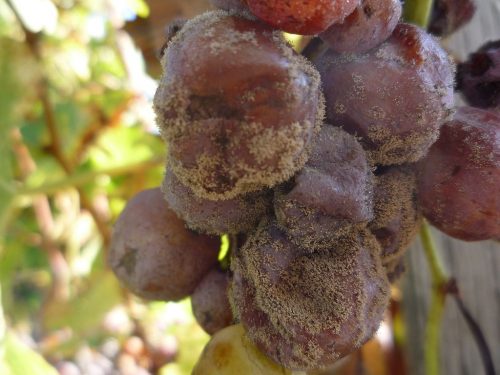
The grapes are covered by gray mold: a variant (Botrytis cinerea) of gray mold.
Other
Ripe grapes are pecked away: birds (blackbirds).
Leaf turns yellow: nitrogen deficiency.
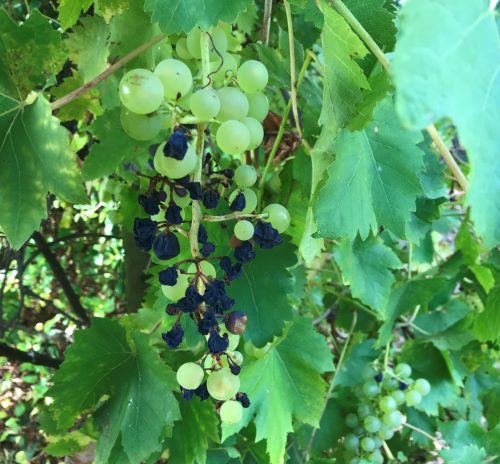
Unripe berries show bruising to eventually shrivel: berries affected by sunburn.

Ripening grapes shrivel due to sunburn. To protect grapes in viticulture from sunburn, they are sprayed with finely ground white clay. This layer of clay mineral washes off during rain.
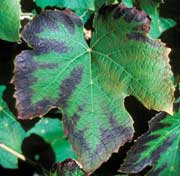
Edges of leaves turn blue-black: potassium deficiency.

Ripe grapes are covered in wasps. Hanging nearly ripe grapes in a bag (paper or plastic) will prevent wasp visits. What also helps is putting down some half eaten sweet fruit (autumn fruit: apples, pears, plums), which lures the wasps away from the grapes.

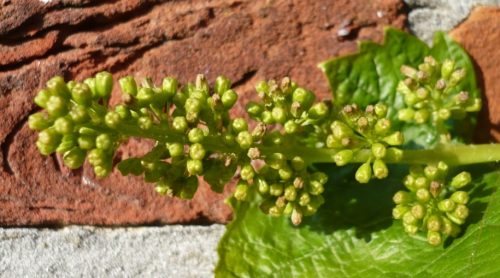
Early spring: brown and curly leaves: frost damage. Sometimes the incipient fruits are also affected, reducing the harvest.

